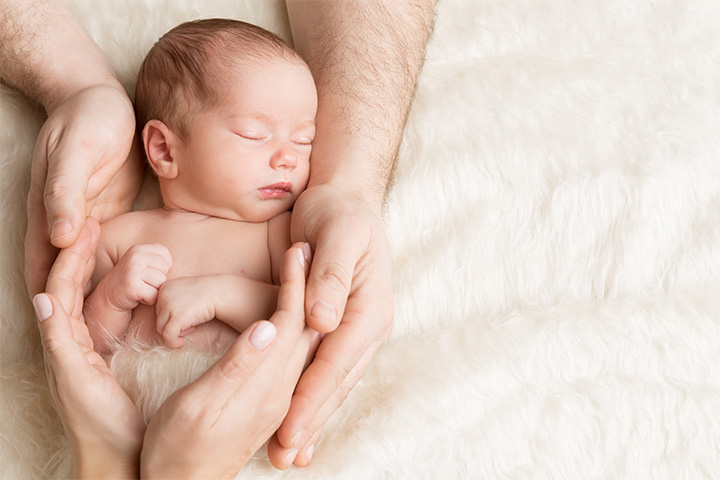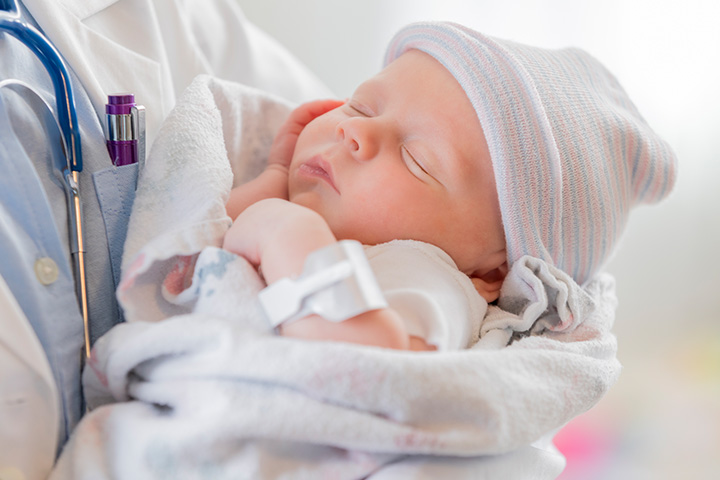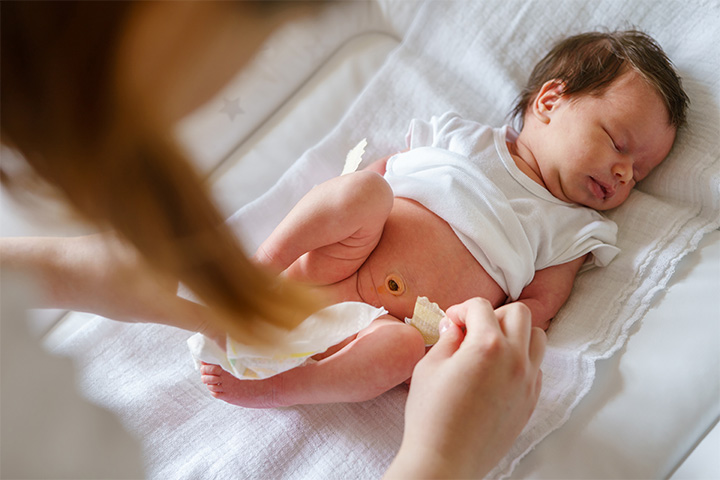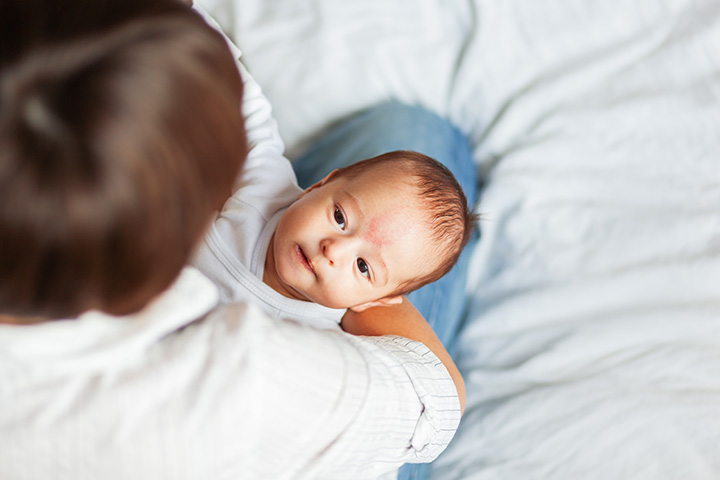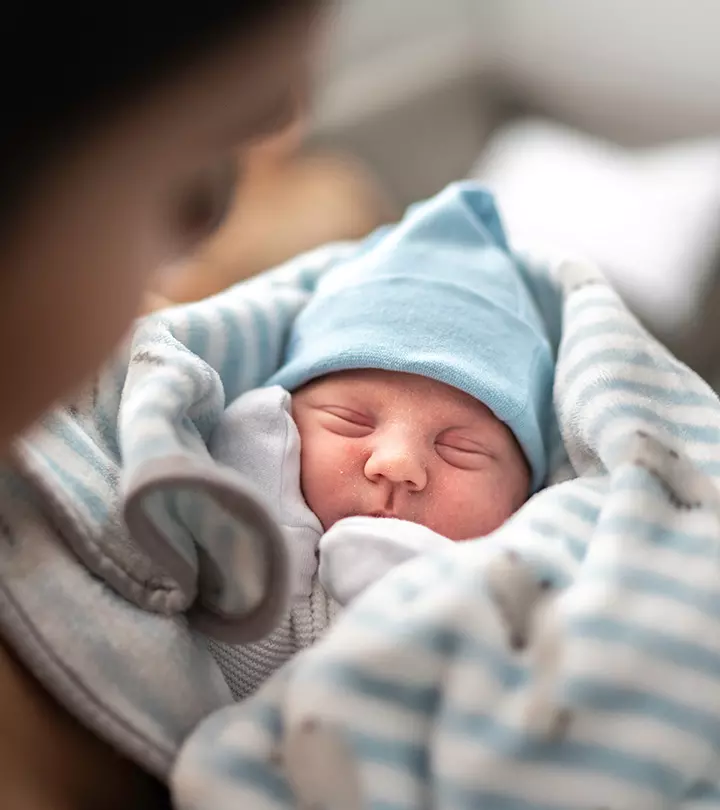
Image: iStock
What their unborn baby looks like is something that every parent-to-be dreams of. They wonder if the little wonder will be chubby, pink, or picture-perfect — just the way they imagined. Some features of a newborn are temporary and sometimes strange. After all, babies emerge from a cramped space in the mother’s womb, immersed and floating in fluid.
During normal deliveries, babies are pushed under immense pressure through a narrow birth canal. What you notice in your baby’s physical appearance depends on several variables: your baby’s condition after delivery (1). So, if you are soon to deliver your munchkin and wondering what to expect when they are born, here’s what you need to watch out for:
1. Posture
Image: IStock
In the first few weeks after birth, your baby will keep their fists clenched, hips and knees flexed, while arms and legs are held close to the chest. This is exactly how your baby is in the womb during the last few months of your pregnancy (2). However, if you have a premature baby, they could pose, appear and behave differently than babies who’ve completed full-term .
2. Sleeping
Image: IStock
Most of the time, your infant will sleep. Those whose moms received anesthesia or some pain medication during labor can be especially sleepy in the first two days after birth. Also, your infant may breathe irregularly — the breathing rate when awake or crying can be higher. However, contact your doctor immediately if your baby turns bluish or takes long breaks between breaths (3).
3. Head Shape
Image: IStock
Babies born normally can have an elongated or pointed head shape at birth. As the skull bones move, this unusual shape will slowly disappear in a few days. On the other hand, babies born through C-sections or breech don’t often show molding. Also, the baby will typically have a soft spot on the top of the head. They could also have a lump towards the top of the head towards the back due to the delivery process. This is called caput succedaneum. It should generally fade in a few days (4).
4. Facial Appearance
Image: IStock
You might find your baby’s face looking puffy because of fluid retention as well as a difficult movement through the birth canal. This is why their facial appearance can undergo several changes in the first few days after birth as they get rid of the excess water. Sometimes, because of the uterus position, the face may appear distorted, but it comes back to its normal state after a while (5).
5. Eyes
Image: IStock
Moments after their birth, infants start to look around at their surroundings. They can see but not focus well, which causes their sight to look crossed or out of line in the first couple of months. Also, some babies may not open their eyes wide due to the puffiness of the eyelids. When you hold your newborn, you can do so upright, leading to the “doll’s eye” reflex. This is where your baby opens their eyes more due to being held upright (6).
6. Ears
Image: IStock
Your baby’s ears may be distorted depending on their position in the uterus. This is because they haven’t developed thick cartilage that holds a firm shape. So, your newborn is born with folded ears. There could also be small tags or shallow pits on the facial skin or in front of the ears (7).
7. Nose
Image: IStock
The nasal passages of newborns are small. Nasal fluids or mucus can cause congestion even if they aren’t suffering from a cold. It’s also common for newborns to sneeze more often. This could be triggered due to allergies, infections, or other issues (8).
8. Legs
Image: IStock
After birth, newborns assume a posture similar to one they had while in the cramped uterus. The legs are flexed and held tightly closed to their bodies. Attempts to open them can trigger a strong grasp reflex in them (9).
9. Abdomen
Image: IStock
Your baby’s abdomen will be somewhat round and fuller. The skin on the middle also tends to protrude when they cry but disappears as they grow in the next few months. Your baby’s umbilical cord needs care. Post-delivery, the cord is clamped before it’s cut off to separate the placenta from the infant. It simply withers off in about three weeks (10).
10. Birthmarks
Image: IStock
Not all infants are born with birthmarks. Salmon patches (pick or red marks) usually disappear in the first year of birth. If your baby is light-skinned, they are more prone to develop these on the eyelids, the bridge of the nose or brows. They could also occur anywhere on the skin (11).
It’s a beautiful feeling to have your little one in your arms after birth. However, caring for your baby when they are so tiny can be scary for many new parents, especially first-timers. And because you’ve been anxiously waiting to meet them, you may be overwhelmed at this point. Consult your doctor immediately if you are confused, disturbed, or uncertain about your child. What was your reaction when you met your child for the first time? Do share your experiences with us in the comments section below.


